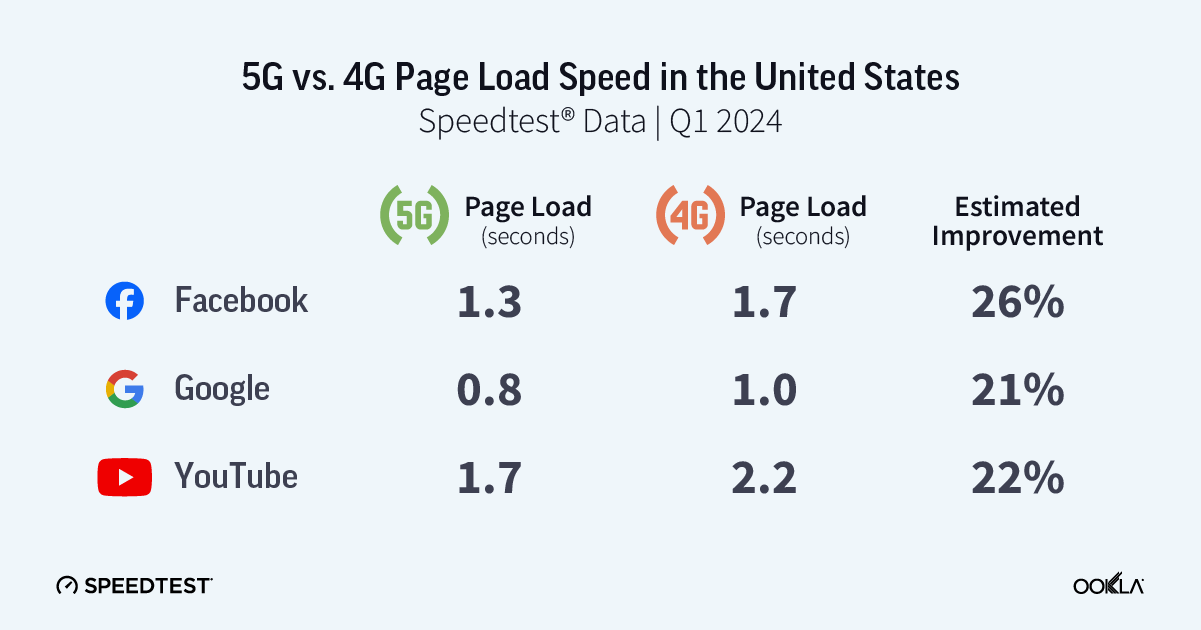


|
||
|
||
Ookla recently tackled this question in one of its research articles. Ookla compared the time it takes to load pages for Facebook, Google, and YouTube on cellphones using 4G LTE networks versus 5G networks.
Ookla thinks that page load speed is a great way to measure cellphone experience. The time needed to load a web page is directly impacted by latency, which measures the lag between the time a phone requests a website and that website responds. You might think that when your phone asks to see a website, the Internet just facilitates the connection. In reality, the web process is not perfect, and not every bit from a website makes it to your phone on the first try. In a normal web connection, the receiving ISP might need to make five to seven requests to resend missing bits until a connection is made between a website and your phone. Latency measures the sum of the needed transactions.
Page load time is a critical statistic for eCommerce sites like Amazon. Ookla cites an article from Medium that quantifies the impact of slow page loads. According to the article:
Ookla also cited an older Ookla article, which is a great primer on why latency matters.
So how did 5G compare to 4G LTE in the U.S.? According to Ookla, 5G improved page load times by 21% to 26% for the three popular web sites.

This will surprise some folks. I know several people who swear that 4G LTE is faster than 5G—and they might be right in their immediate neighborhood. Also, note that measuring page load time is not the same as measuring speed on a speed test.
We should step back and look at the difference between 4G LTE and 5G. To a large degree, these are the same technology, and the difference is the frequency being used by the cellphone. The big carriers all established new bands of frequency they labeled as 5G, but initially operated these new bands with the identical specifications operating the 4G LTE networks. Over time, the carriers have introduced a few 5G improvements in the 5G portion of the network—but the long list of whiz-bang improvements that were promised by 5G has never materialized. Your 5G phone is still not using network slicing and other improvements that promised a big technology leap for 5G.
Also note that Ookla is reporting national statistics, and it’s likely that these statistics vary by market. It’s also likely that the performance of the two technologies differs during the day as the load on the two networks ebbs and flows. But the Ookla statistics show that, overall, there is better performance on 5G. Perhaps the article should have come with the traditional advertising warning: “Note that your performance might vary.”
Sponsored byRadix

Sponsored byIPv4.Global

Sponsored byVerisign

Sponsored byVerisign

Sponsored byCSC

Sponsored byDNIB.com

Sponsored byWhoisXML API
